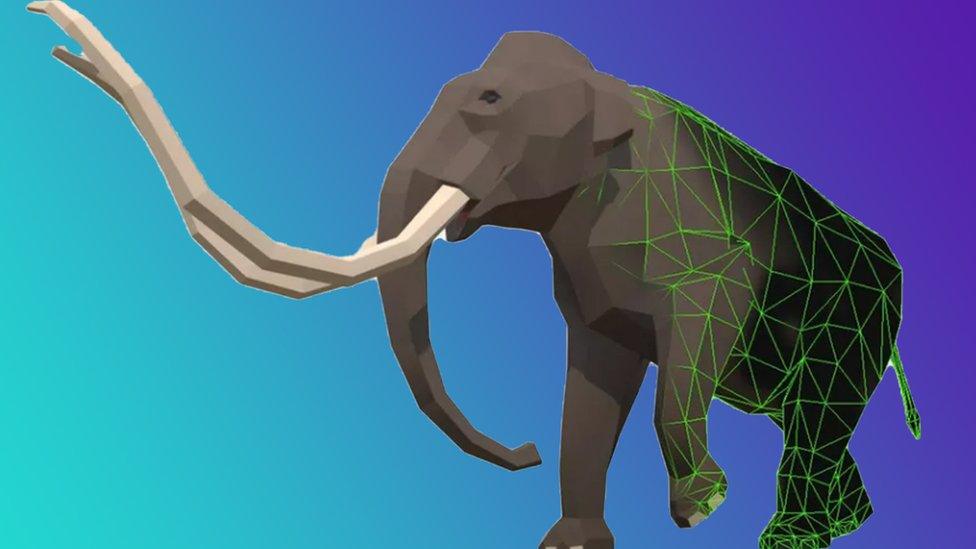Metaverse: Extinct Ice Age animals will be re-created virtually
- Published
- comments

A virtual model of the Columbian mammoth
Ice Age animals went extinct around three to six thousand years ago, and some people see the metaverse as the future of the internet - but now a group of scientists are determined to bring these two things together.
While looking at how augmented reality (AR) can be used in museums, researchers realised there were not any accurate digital models of Ice Age animals that they could use.
So, using the most up to date research, they decided to make their own.
The experts made artistic designs of over a dozen Ice Age era animals - including the sabre-toothed cat, Californian mammoth, dire wolf, and teratorn - with the hope that the new AR models can then be recreated in the metaverse.
Stages in the development of a dire wolf model
The experts from the Natural History Museum of Los Angeles County and La Brea Tar Pits (a paleontological research site), worked with researchers and designers at the University of Southern California (USC) to create the new scientifically accurate models.
The models were built in a blocky style so that they could still be simple enough to run on normal mobile phones with limited processing power.
The researchers hope the article, published in the Palaeontologia Electronica journal, will bring more respect to 'paleoart' - the kind of art that recreates what extinct animals might have looked like.
Art that recreates scientifically what extinct animals might have looked like
"Paleoart can be very influential in how the public, and even scientists, understand fossil life," said Dr. Emily Lindsey, Assistant Curator at La Brea Tar Pits and senior author of the study.
The scientists hope that by providing more accurate models of extinct animals, people will get a better idea of what they looked like.
The AR experiences can be activated on social media platforms and include the sabre-toothed tiger, dire wolf and Shasta ground sloth
While they were able to use their scientific knowledge for some details, they admitted there were times when there were gaps in their knowledge.
So, for example, they could accurately depict the shaggy fur of a Shasta ground sloth because paleontologists have found a whole skeleton of the species with hair and skin still preserved.
But for the mammoth-like masodons, paleontologists have only found a few strands of hair so creators had to make an artistic decision when creating the fur.
One way these models will be used is when people go to a museum, they can scan a code on their phone and study the 3D animal to get a better sense of what they looked like.
- Published21 October 2021
- Published26 February 2022
